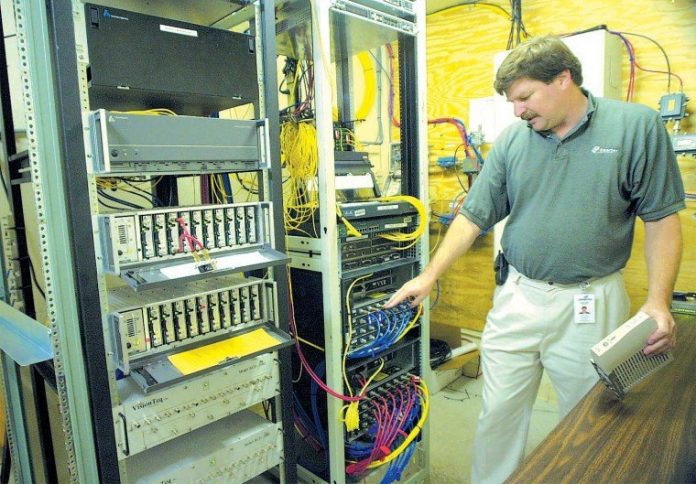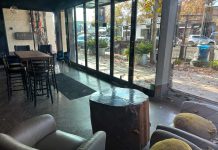GILROY
– Hit and miss. That’s basically what it takes to get
”
high-speed Internet access
”
in Gilroy.
GILROY – Hit and miss. That’s basically what it takes to get “high-speed Internet access” in Gilroy.
Despite Gilroy’s proximity to Silicon Valley, many of its homes are limited to dial-up connections instead of faster DSL or cable modems.
There are several reasons for lack of connectivity, including a house’s distance from an operator’s central office and the condition of wires and cables used in a customer’s neighborhood. There also is a difference between fiber and copper cables, with fiber allowing increased speed.
A variety of options are available in Gilroy, including DSL, cable modems and wireless connections, but a customer has to live within a certain area for the services to reach them. With DSL, a customer’s home cannot be more than a certain number of feet from the central office, usually between 10,000 and 20,000 feet (or half a mile). Most of these offices are located in downtown Gilroy. If someone lives further away than this, their DSL speed slows and may not reach the computer.
Because of the distance requirements, specific phone lines and addresses have to be tested on an individual basis to check for availability of DSL or cable modem service. Also, customers can log onto different Web sites and enter a zip code or phone number to check if DSL, cable modems or wireless technology is available at their residence. For instance, HotCity Internet has a list of phone numbers that it can service, including those with 776, 842, 847 and 848 suffixes.
One particular area in Gilroy having a hard time receiving high-speed access is the northwest quadrant of town, which includes streets like Santa Theresa Boulevard and Mantelli Drive. Richard Anden lives in that area and has tried unsuccessfully for one year to get DSL or a cable modem hooked up to his house.
“I don’t have the time – I want things faster,” Anden said. “… They’re building all these new homes in Gilroy but didn’t plan to give the houses fast connections.”
Anden has been on waiting list after waiting list. He said he’s been teased by DSL or cable modem offers only to be let down when he found out they weren’t available to him. He said it’s frustrating when businesses advertise services that won’t be available to him for years.
Defining some key terms
DSL, or Digital Subscriber Line, is a family of digital telecommunications protocols designed to allow high-speed data communication over the existing copper telephone lines between end-users and telephone companies. When two conventional modems are connected through the telephone system, it treats the communication the same as voice conversations. This has the advantage that there is no investment required from the telephone company, but the disadvantage is that the bandwidth available for the communication is the same as that available for voice conversations, usually 768Kbps or higher.
Cable modems, on the other hand, are types of modems that allow people to access the Internet via their cable television service. A cable modem can transfer data at 500Kbps or higher, compared with 28.8Kbps for common telephone line modems, but the actual transfer rates may be lower depending on the number of other simultaneous users on the same cable. Industry pundits often point out that the cable system still does not have the bandwidth or service level in many areas to make this feasible. For example, it has to be capable of two-way communication.
Reaching secluded areas
By rebuilding the city’s existing cable infrastructure, Charter Communications is trying to change the frustration of Gilroyans. Because cable modem connections use cable, sometimes whole cable systems must be replaced so businesses can offer the high-speed of cable modems. According to Charter general manager Dan McGough, all Gilroy residents within city limits will have cable modems available to them by Thanksgiving. That number will be 95 percent of customers in more secluded areas. He said the cable system in Gilroy was old and not well maintained and it has cost Charter $12 million to rebuild the system.
“These are the highest speeds available in the industry,” McGough said.
The cable modem offers speeds between 256Kbps and 1.5Mbps with an average of 768Kbps; DSL, 256Kbps and 1.5Mbps with an average of 512Kbps; and dial-ups offer a speed of around 53Kbps, McGough said. A bit is a digital signal that represents 0s and 1s in a binary system and a unit of information storage capacity in a computer’s memory. One Kbps equals 1,000 bits per second.
Many residents may have DSL or cable modems available to them, but can’t get over the high cost. However, McGough said the prices are very reasonable right now.
“Cable (and DSL are) very close to the dial-up cost, but offer more services,” he said. “I think they are very affordable.”
Continued frustration
This all sounds great, but some Gilroy residents are still skeptical.
Steve Owen has tried to get DSL at his house for four years and has now given up. He said the most frustrating part is receiving so many offers, but none of them being able to follow through.
“It’s not the end of the world. It’s just frustrating to have it offered, and it doesn’t happen,” Owen said. “I don’t understand why it’s such a difficult thing.”
Owen lives on Santa Teresa Boulevard, inside Gilroy’s city limits. He is an insurance agent that works from his home and has been using a dial-up connection since 1989.
“It’s very important that we communicate as quickly as possible. We work everyday on our computers,” Owen said of he and his wife. “Most of the people that would buy it (DSL or a cable modem) can’t get it.”
Owen said he pays about $20 a month for a dial-up, but would pay up to $60 for DSL.














